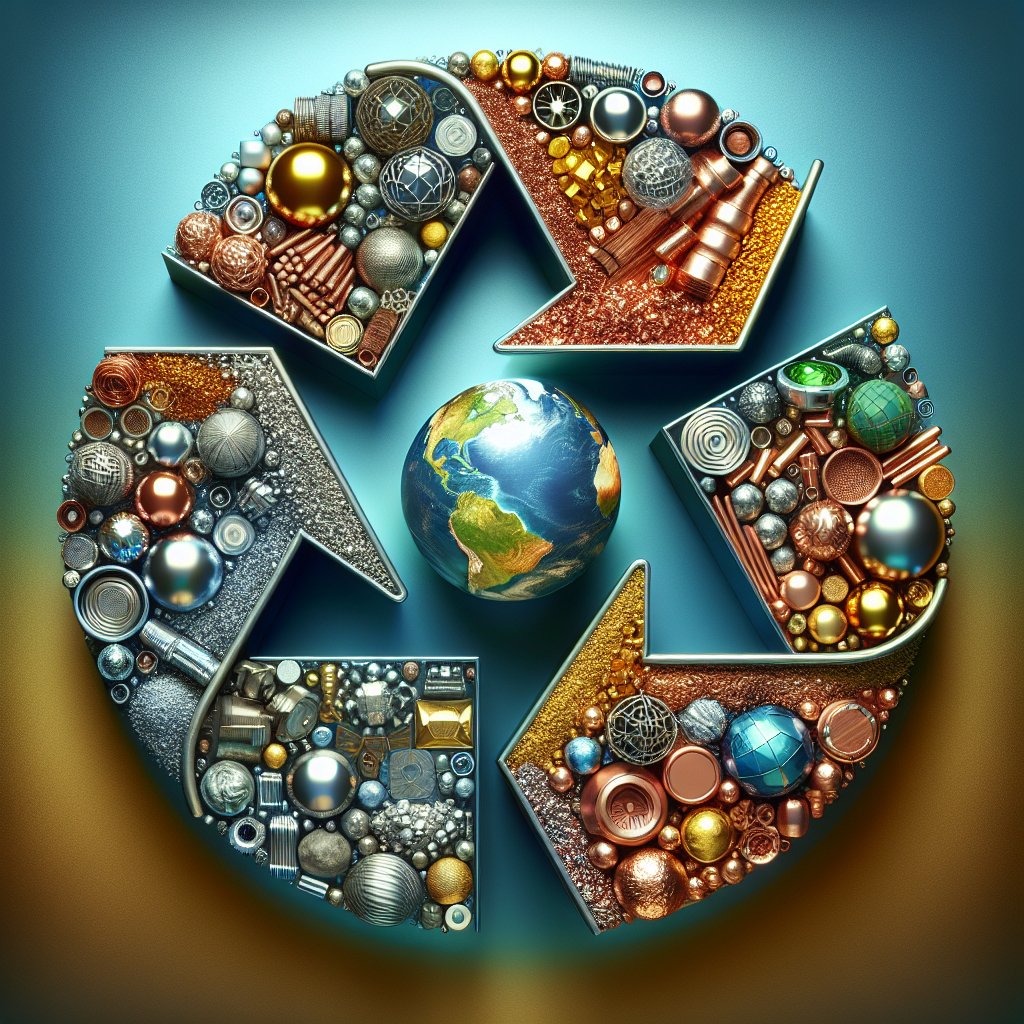The concept of a circular economy for rare metals is gaining traction as industries and governments seek sustainable solutions to resource scarcity and environmental challenges. Rare metals, essential for modern technologies, are finite and often extracted through environmentally damaging processes. Transitioning to a circular economy could mitigate these issues by promoting recycling, reuse, and sustainable sourcing. This article explores the feasibility of achieving a circular economy for rare metals, examining current challenges, potential strategies, and future prospects.
Understanding the Importance of Rare Metals
Rare metals, including elements like lithium, cobalt, and rare earth elements, are critical components in a wide range of technologies. They are used in everything from smartphones and electric vehicles to renewable energy systems and advanced military applications. The demand for these metals has surged in recent years, driven by technological advancements and the global push towards green energy solutions.
The unique properties of rare metals, such as their conductivity, magnetism, and strength, make them indispensable in the production of high-tech devices. For instance, lithium is a key component in rechargeable batteries, while neodymium is crucial for the production of powerful magnets used in wind turbines and electric motors. As the world continues to transition towards a more digital and sustainable future, the demand for these metals is expected to grow exponentially.
However, the extraction and processing of rare metals pose significant environmental and ethical challenges. Mining operations often lead to habitat destruction, water pollution, and significant carbon emissions. Additionally, many rare metals are sourced from regions with poor labor practices and geopolitical instability, raising concerns about supply chain ethics and security. These challenges underscore the need for a more sustainable approach to managing rare metal resources.
Challenges in Implementing a Circular Economy for Rare Metals
Transitioning to a circular economy for rare metals involves several complex challenges. One of the primary obstacles is the technical difficulty of recycling these metals. Unlike more common materials such as aluminum or steel, rare metals are often used in small quantities and are embedded in complex products, making them difficult to extract and recycle efficiently.
For example, the recycling of lithium-ion batteries, which contain valuable metals like lithium, cobalt, and nickel, is a technically challenging process. These batteries are composed of multiple layers and materials, requiring sophisticated technology to separate and recover the metals without degrading their quality. Current recycling methods are often inefficient and costly, limiting their widespread adoption.
Another significant challenge is the lack of infrastructure and regulatory frameworks to support a circular economy for rare metals. Many countries lack the necessary facilities and technologies to recycle rare metals effectively. Additionally, there is often a lack of incentives for companies to invest in sustainable practices, as the initial costs can be high and the economic benefits uncertain.
Furthermore, the global nature of rare metal supply chains complicates efforts to implement circular economy principles. Rare metals are often mined in one country, processed in another, and used in products manufactured in yet another. This international complexity makes it difficult to establish standardized practices and regulations for recycling and reuse.
Strategies and Future Prospects for a Circular Economy
Despite the challenges, there are promising strategies and innovations that could pave the way for a circular economy for rare metals. One approach is to improve the design of products to facilitate easier recycling. By designing products with disassembly and recycling in mind, manufacturers can make it easier to recover rare metals at the end of a product’s life cycle.
Advancements in recycling technologies also hold significant potential. Researchers are developing new methods to improve the efficiency and cost-effectiveness of rare metal recycling. For instance, hydrometallurgical processes, which use aqueous solutions to extract metals, are being refined to recover rare metals more efficiently. Additionally, the development of bioleaching techniques, which use microorganisms to extract metals, offers a more environmentally friendly alternative to traditional methods.
Policy measures and international cooperation are also crucial for advancing a circular economy for rare metals. Governments can play a key role by implementing regulations that promote recycling and sustainable sourcing, as well as providing incentives for companies to adopt circular practices. International collaboration is essential to address the global nature of rare metal supply chains and to establish common standards and practices.
Looking ahead, the transition to a circular economy for rare metals will require a concerted effort from all stakeholders, including governments, industries, and consumers. By embracing innovative technologies, supportive policies, and sustainable practices, it is possible to reduce the environmental impact of rare metal extraction and use, ensuring a more sustainable future for generations to come.












